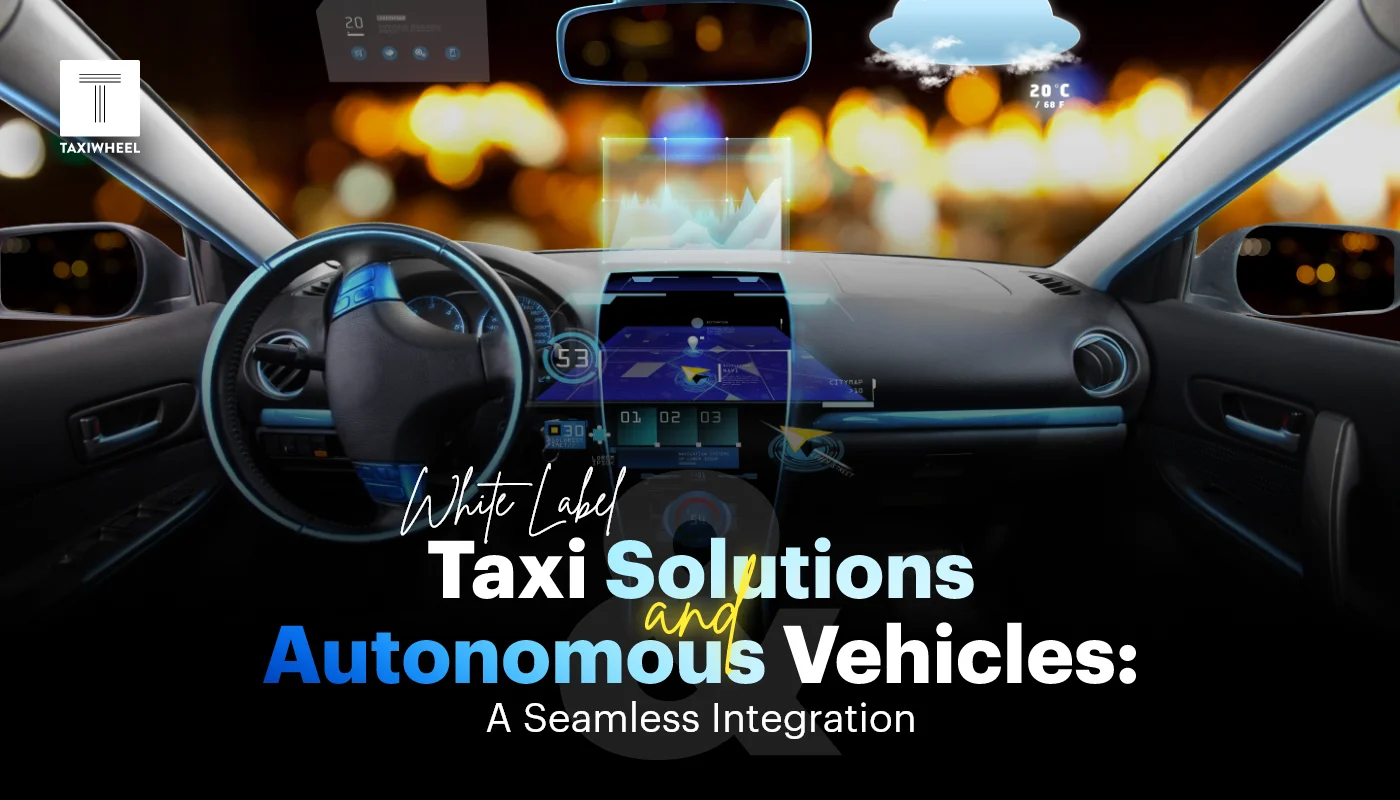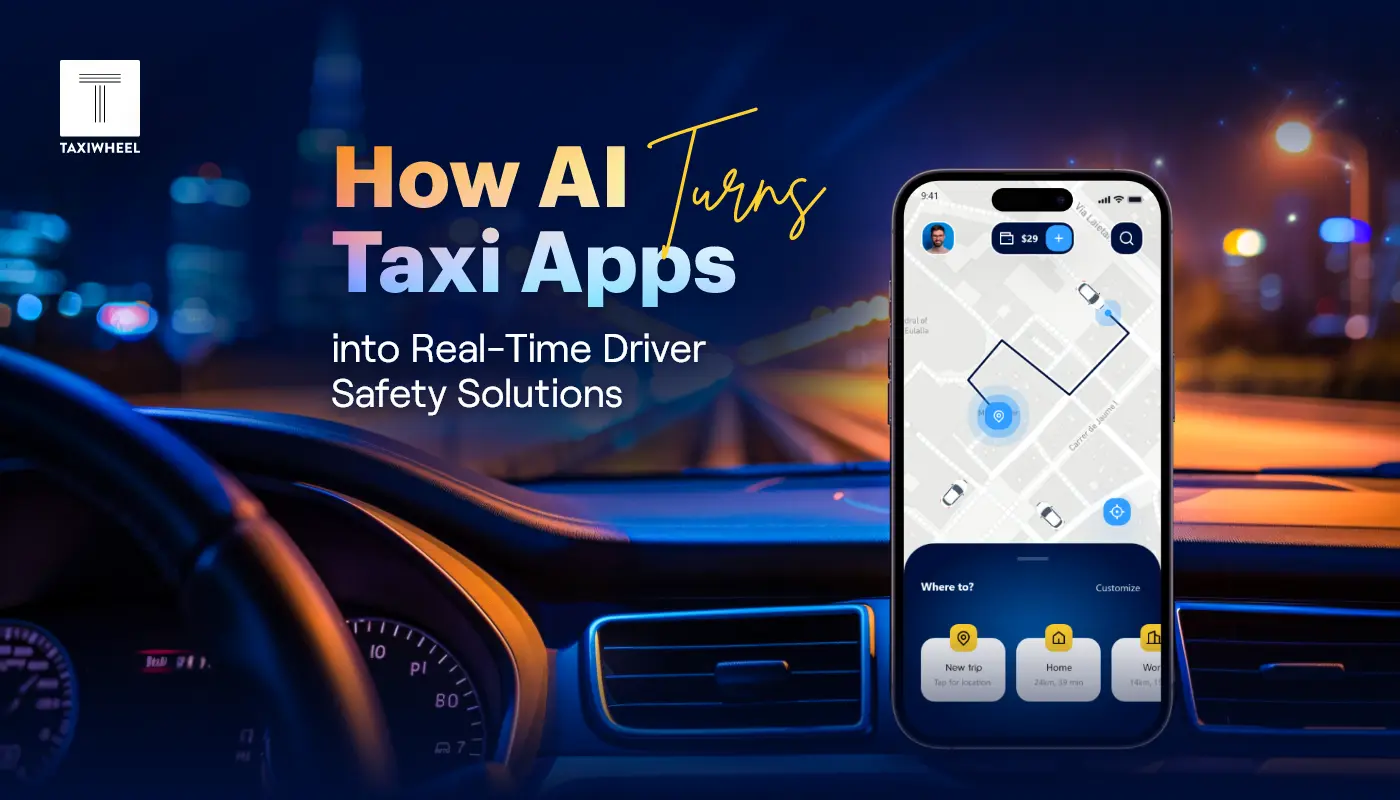
How Autonomous Vehicles Integrate with White Label Taxi Solutions
The taxi world has been undergoing a huge revolution over a few years! This transformation is driven by tech advancements and changing consumer preferences. One of the pioneering progressions is Autonomous Vehicles (AVs).
Integrating AVS with White Label Taxi Solutions means connecting a self-driving car to a pre-built taxi booking platform that can be customized by various companies. It presents a unique opportunity to redefine the service models and reduce operational costs for taxi businesses offering white label taxi solutions. Plus, it offers a new way to improve safety, security, efficiency and facilities when booking taxi services on demand.
Role of Autonomous Vehicles in White-Label Taxi Solutions
1. Lower Operational Costs: Autonomous vehicles eliminate the need for human drivers, reducing labor costs, which are a significant portion of taxi service expenses.
2. 24/7 Availability: Autonomous vehicles can operate around the clock without the limitations of human drivers, such as fatigue or shift changes, enabling continuous service.
3. Fleet Management: Autonomous fleets can be dynamically managed and scaled based on demand, optimizing resource allocation.
4. Personalization: Advanced AI systems can tailor the ride experience to individual preferences, such as temperature, music, and route preferences.
5. Predictive Maintenance: AI-driven systems can monitor vehicle health in real-time, reducing the likelihood of breakdowns and ensuring reliable service.
6. Route Optimization: Autonomous vehicles can leverage real-time data to choose the most efficient routes, reducing travel time and improving efficiency.
7. Demand Analysis: Data collected from autonomous fleets can provide valuable insights into customer behavior and demand patterns
Integration Process of AV with White Label-Taxi Apps
The process to integrate autonomous vehicles with white-label taxi apps is a transformative step in revolutionizing the transportation industry. It involves various steps to deliver seamless functionality, safety, and efficiency. Read below for the steps involved:
1. Assessment & Feasibility Study
- Evaluate the white-label taxi platform’s infrastructure and compatibility with AV systems to ensure smooth integration and optimal performance.
- Identify regulatory requirements and necessary approvals for AV deployment, considering local laws, safety standards, and potential future regulations for seamless operation.
2. Integration with Autonomous Driving Software
- Connect the AV’s self-driving software with the white-label taxi solution’s backend for seamless synchronization between systems.
- Ensure real-time data exchange between AV sensors, GPS, and ride-hailing algorithms, enabling precise tracking and decision-making for improved ride efficiency and safety.
3. Fleet Management System Enhancement
- Upgrade the fleet management module to include AV-specific functionalities, such as real-time location tracking, predictive maintenance alerts, and automated dispatching based on demand.
- Implement geofencing for allowed operation areas, enhancing safety and ensuring the vehicles only operate within authorized regions, preventing potential operational risks.
4. Ride Booking and Dispatch Optimization
- Modify the booking interface to allow users to easily request an autonomous vehicle, enhancing the customer experience with minimal input required.
- Implement AI-driven ride allocation and route optimization to ensure efficient trip management, reducing wait times and improving overall service efficiency, even during peak demand periods.
5. Safety and Communication Features
- Enable real-time monitoring and emergency intervention mechanisms for remote operators, allowing quick actions in case of unforeseen situations or technical issues.
- Integrate voice and text-based communication between passengers and support teams, providing reassurance and enabling effective problem resolution during the ride.
6. Regulatory Compliance and Security Measures
- Implement robust data security and privacy measures to protect passenger information while ensuring compliance with regional transportation and data protection laws.
- Conduct rigorous testing and validation before full-scale deployment, ensuring that the AV systems meet all legal, technical, and safety standards for a successful launch.
Benefits of Integrating Autonomous Vehicles with White Label Taxi Solutions
With AI-driven operations, autonomous vehicles bring various advantages to companies offering white-label taxi solutions! Read more details on the top benefits of doing so.
1. Optimized Costs & Higher Revenue
AV fleets reduce labor costs and boost service availability, enabling:
- Lower expenses with minimal human resources
- Increased ride frequency through efficient trip management
- Higher profits with premium AV ride services
2. Improved Safety & Fewer Accidents
Over 90% of road accidents result from human errors. AVs use AI and sensors to:
- Prevent speeding, distractions, and fatigue-related crashes
- Enhance safety for passengers and pedestrians
- Improve insurance and liability tracking with precise data
3. Seamless Passenger Experience
AI-driven personalization enhances comfort and convenience through:
- Predictive ride suggestions based on travel patterns
- Customized in-ride entertainment and settings
- Faster ride availability with optimized fleet operations
4. Eco-Friendly & Sustainable Transport
Autonomous electric and hybrid vehicles contribute to:
- Lower emissions and reduced fuel consumption
- Less traffic congestion via AI-driven route planning
- Government incentives supporting green mobility
Wrapping Up
Autonomous vehicles are changing the ride-hailing industry! These vehicles offer cost-effective, safe, and efficient transportation services to passengers and help companies improve fleet management, stay competitive, and offer improved experiences.
For successful adoption of AVs in white label taxi solutions, it is essential to handle challenges like regulations, cybersecurity risks, and gaining consumer trust. As cities evolve into smarter, more connected places, AV-powered taxi solutions will be a key part of shaping the future of urban transportation. These solutions will help define how we move in the coming years.
Explore How Autonomous Vehicles Enhance White Label Taxi Solutions!
Frequently Asked Question
Autonomous vehicles use white-label systems for route planning, dispatching, and payments. These solutions help ensure seamless integration with human-driven vehicles, allowing fleets to operate smoothly and efficiently without disruptions in the service flow.
White-label technology provides real-time vehicle tracking, maintenance monitoring, and intelligent algorithms that optimize supply and demand. This leads to more efficient fleet management, improved performance, and a better overall user experience.
Yes, white-label platforms support dynamic pricing based on various ride factors like distance, time, and demand. This ensures that pricing remains fair, transparent, and adaptable to each unique ride, benefiting both customers and operators.
Once a ride is booked, the system automatically dispatches the nearest available autonomous vehicle. This reduces wait times significantly, while also offering a seamless, more efficient ride experience for passengers, all while maintaining convenience.
Autonomous vehicles are equipped with key safety features like collision avoidance, emergency braking, and real-time monitoring. These ensure the vehicles meet or exceed safety standards and comply with local regulations, providing a safe environment for passengers.
Payments for autonomous rides are processed directly through the app, supporting various payment methods such as digital wallets, cryptocurrency, and subscriptions. This ensures a smooth, hassle-free transaction process for passengers, making payment simple and convenient.
Recent Blogs

When you book a ride through a taxi app what’s the first thing you expect? Sure you want the driver to arrive quickly and the app to work smoothly. But above all, you want to feel safe. That’s what keeps people coming back to a service-or leaving it behind for good. For companies investing in […] Read more

For more than a decade, commission-based models have been the backbone of ride-hailing platforms. Companies like Uber and Lyft built their empires by charging drivers a percentage from every trip. It worked in the early years, but the cracks in this system have become harder to ignore. Drivers complain about shrinking margins, passengers face unpredictable […] Read more

The ride-hailing industry is rapidly evolving—and so are the risks. Every time a rider books a trip, or a driver checks a route, valuable data moves through the system. For platform owners, this isn’t just about app performance. It’s about protecting the information that fuels the business. From payment details to real-time locations, taxi app […] Read more